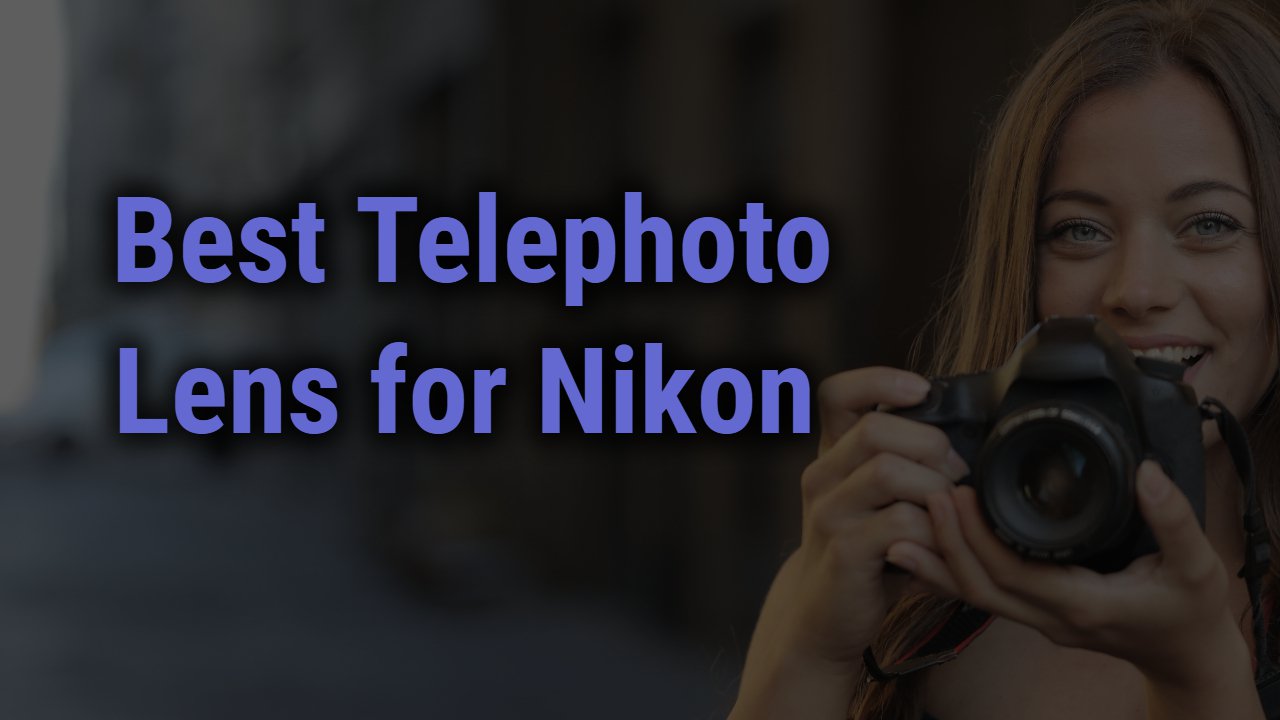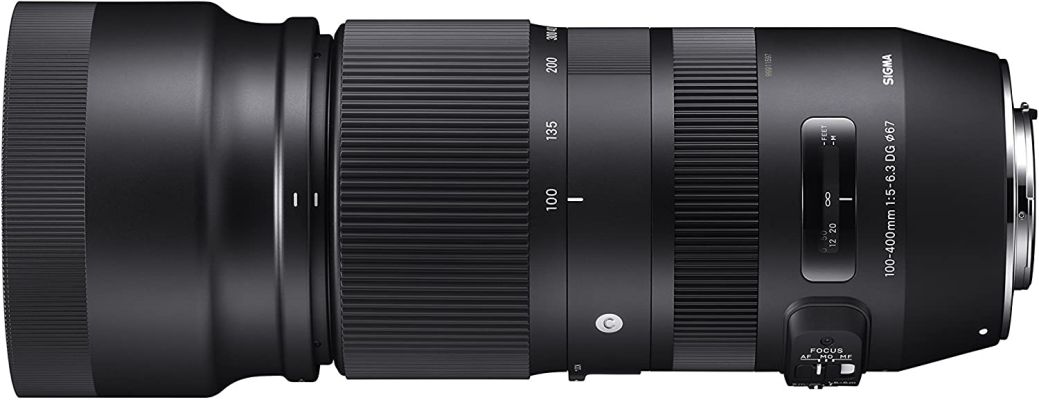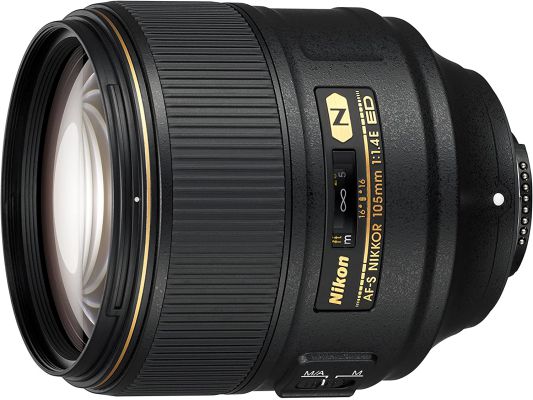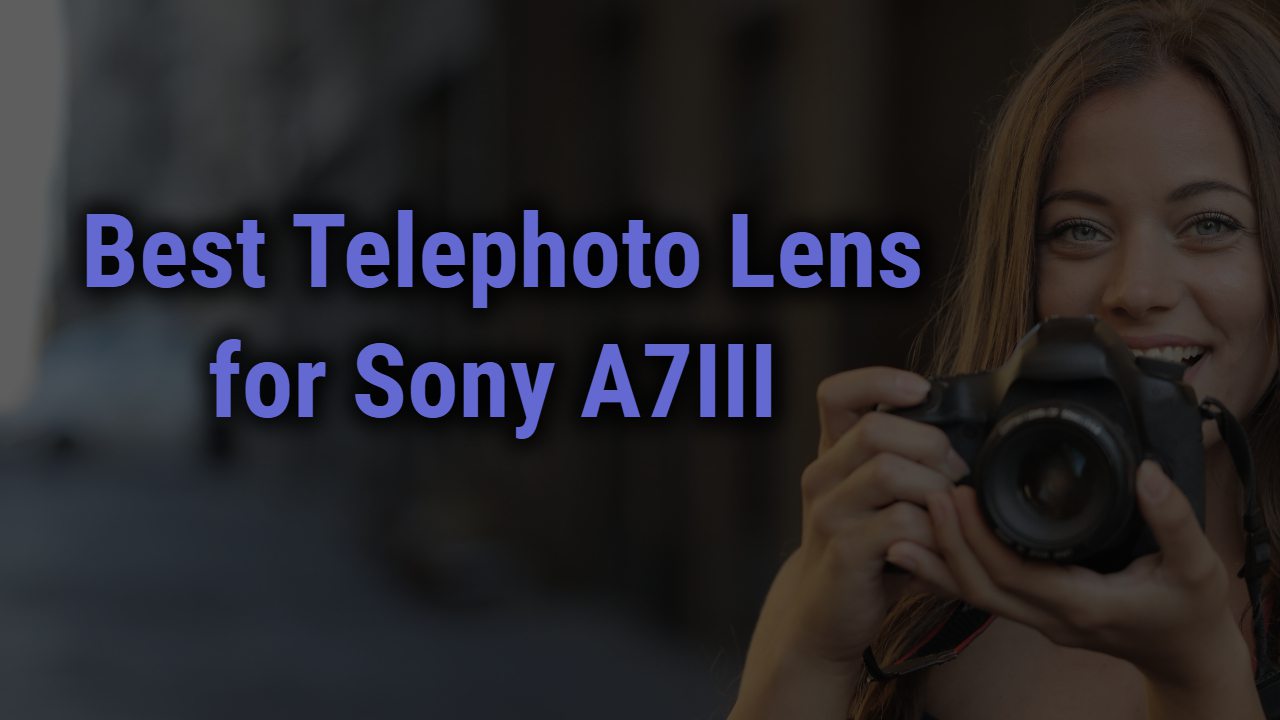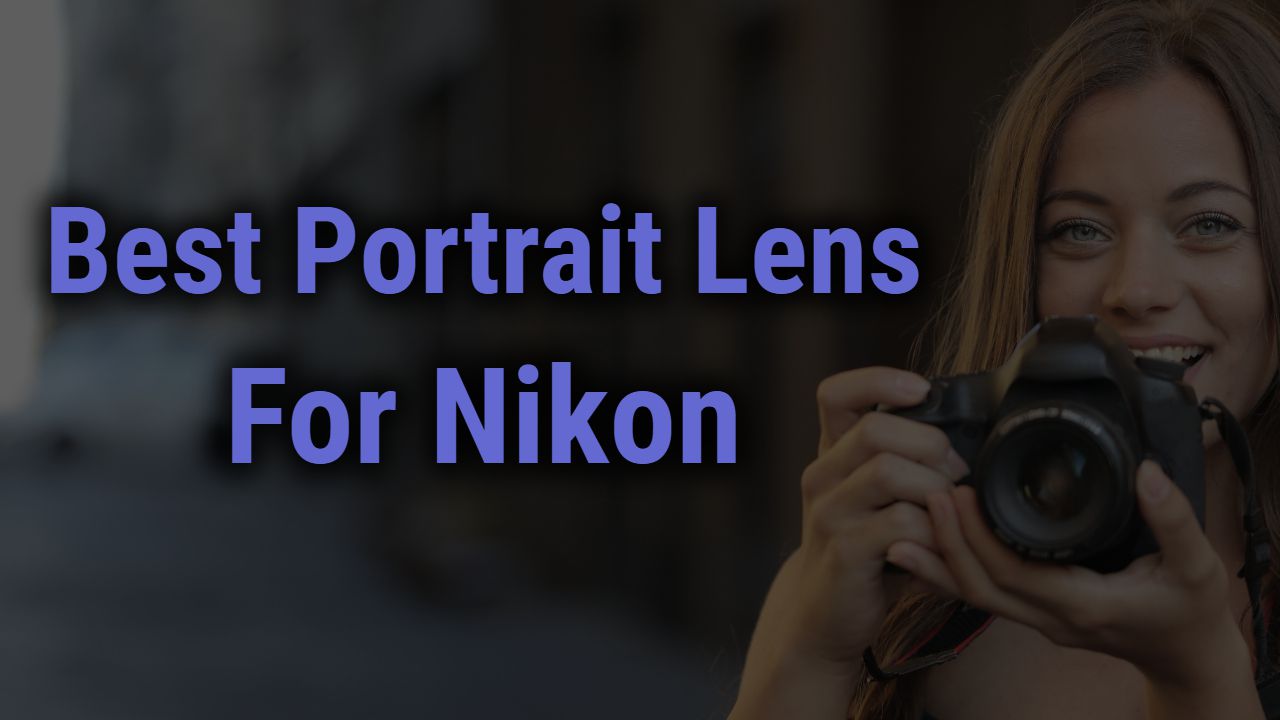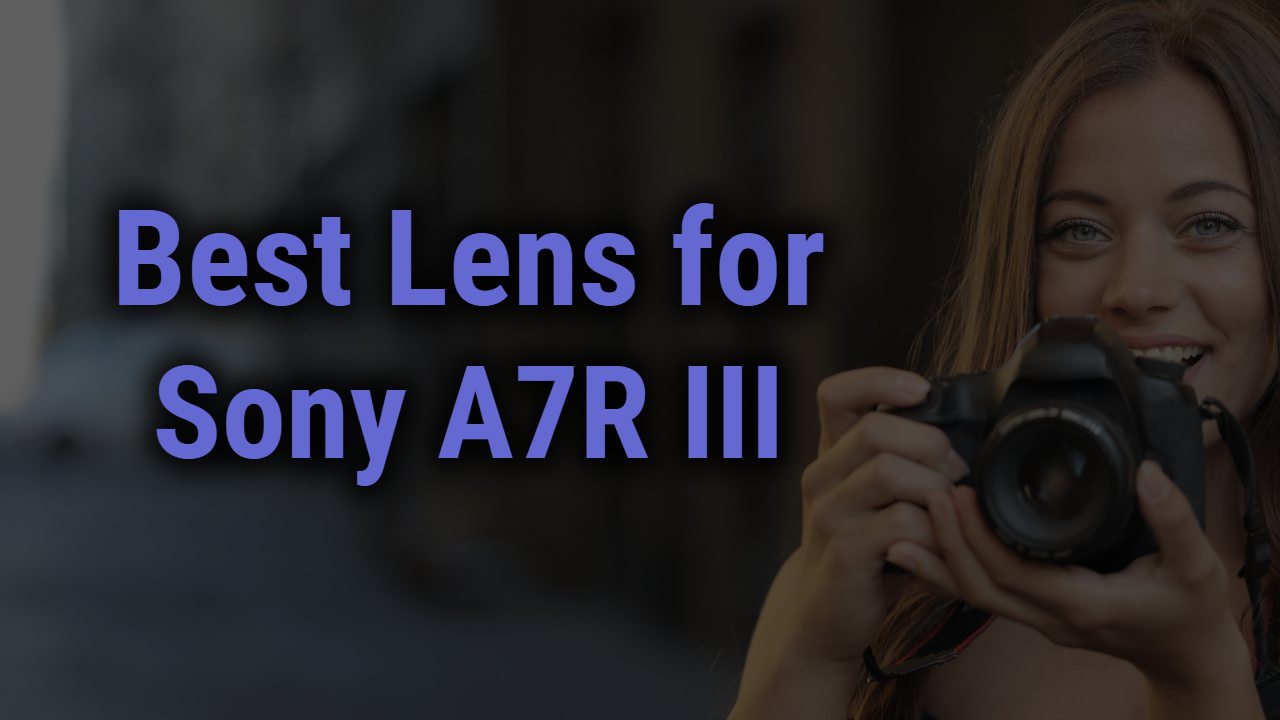Telephoto lenses are known for their high-leveled creativity and performance. I personally love the active profile of telephoto lenses because they are pretty good at getting a closer or in-depth detailed view of the farthest subjects lost in the larger view.
Whether my subject is wildlife, sports, or, most extended reign people, the telephoto lens has always found a way to catch the figure with possible professionalism.
Also, the unrivaled versatility of Nikon digital appliances is something that doesn’t need explanation because they are always on top. They have a tendency to set your success rate regardless of the top.
So if you are too a Nikon camera user and looking out for the best model of Telephoto lens for the same, this article can help you with that.
To save your time and free hassle, I have mentioned the top best telephoto lenses for the Nikon camera and their creative abilities. I have personally come across all of these lenses and experienced their working enough to write a better vision of all so that you can confront one ideal telephoto lens for your Nikon camera.
So let’s get started and learn more about why I chose them and how I manage to get the best shot from these creative lenses.
Note: You can use any F-mount Lens on any Nikon DSLR Camera. However, if you want to use it on a Mirrorless Camera (Which typically has “Z” in the camera name) then you will have to use the FTZ II Adapter. Also, Z-Mount lenses can only be used on a Mirrorless Camera (Which typically has “Z” in the camera name).
| Best F-Mount Telephoto Lens for Nikon |
|---|
|
1. Sigma 70-200mm (Best Telephoto Zoom Lens)
|
|
2. Sigma 60-600mm (Best Super Telephoto Zoom Lens)
|
|
3. Sigma 100-400mm (Budget Telephoto Zoom Lens)
|
|
4. NIKKOR 105mm (Best Telephoto Prime Lens)
|
|
5. Sigma 135mm (Budget Telephoto Prime Lens)
|
|
6. Sigma 85mm (Best Short Telephoto Prime Lens)
|
|
7. NIKKOR 70-300mm
|
| Best Z-Mount Telephoto Lens for Nikon |
|---|
|
1. NIKKOR Z 70-200mm (Best Telephoto Zoom Lens)
|
|
2. NIKKOR Z 100-400mm (Best Super Telephoto Zoom Lens)
|
|
3. NIKKOR Z 24-200mm (Budget Telephoto Zoom Lens)
|
|
4. NIKKOR Z 85mm (Best Short Telephoto Prime Lens)
|
This Post Contains
Best F-Mount Telephoto Lenses for Nikon
1. Nikon AF-S FX NIKKOR 105mm f/1.4E ED
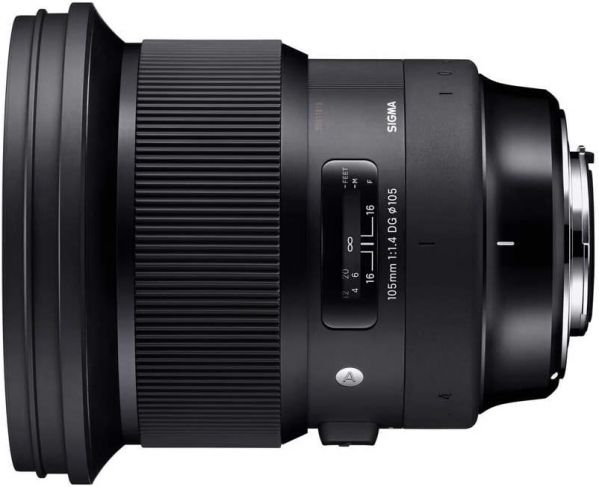
Checkout on
Amazon | B&H Photo Video | Adorama | Nikon USA
Exploring photography with different lenses has an infinite level of joy; you must have experienced it as I did. Among my other collections, this particular Nikon Nikkor 105mm telephoto lens is something I can’t get over with.
There are numerous factors that work pretty dedicatedly to impress me.
First things first, I have noticed the exquisite design of the lens, the durability, and strength is absolutely stunning. Apart from the rigidity, the outer lens body is double layered fluorine coating, which benefits me from using the lens under any harsh climate.
I also want to mention the lens weight, the lightest of 985 grams, which feels like almost nothing in the hand.
In terms of photography, I feel this lens is quite a match to perfection; it offers a 105mm focal length to get the longest reach shot. Along the way, the aperture of f/1.4 draws a massive amount of lighting on the sensor, which is fine in my case since I am a dark-hour shooter.
I have experienced the effective image correctness element supremacy that can deal with my image’s distortion, aberration, and other stuff.
You can count on its three extra-low dispersion glass elements and nano crystal coating; these are some magnificent features that can build your image professionalism.
I can’t deny the special electromagnetic aperture that keeps the exposure control stability throughout the shot. I can perform the whole easy focusing through the silent wave motors, and with the focusing distance of 3.28 inches and magnification of 0.13x, things would have been pretty easy to shoot.
The best of all is that even with all of these abilities, I didn’t have to break my wallet to buy this wonderful lens; it comes with a modest fine budget. So if you want to try creativity and master your skill, this lens can be the perfect match.
2. Sigma 135mm f/1.8 DG HSM Art
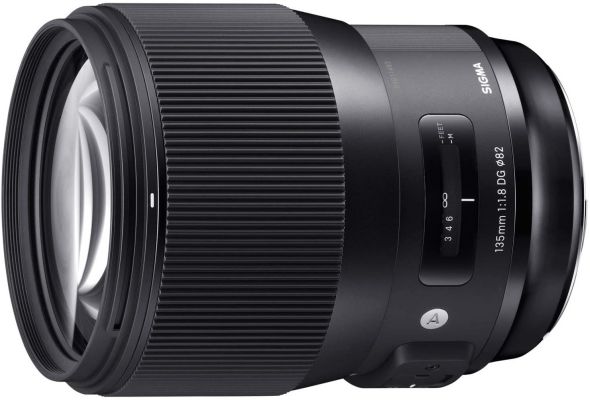
Checkout on
Amazon | B&H Photo Video | Adorama | Sigma
If you are out there in the market wandering for a budget-friendly lens, then you are definitely in luck because Sigma 135mm has versatility in the budget factor.
I have been impressed with its sophisticated optics and advanced design because it bestows impeccably attractive abilities on the one carrying the same.
The Sigma 135mm lens is quite remarkable for shooting the subject from the farthest distance; why? Because of its longest reach of 135mm. I personally prefer the prime lens over the zoom because I always like to choose speed.
For managing my dark shot, the lens f/1.8 aperture managed to throw immense light, which secured the exposure and sharpness. The same goes for focusing; the lens provides 2.87 inches of minimal distance, which is enough to catch the subject with adequate zoom.
In the technical lens specification, I cannot forget to mention the magnification of 0.2x, the ability to provide half real-life size images that work on my closed portrait shots.
One thing I like the most about the lens is its thermally stable composite body that puts up longevity and durability. Since I am fond of an additional accessory, I always look for the included lens hood and mount security for accuracy and grip.
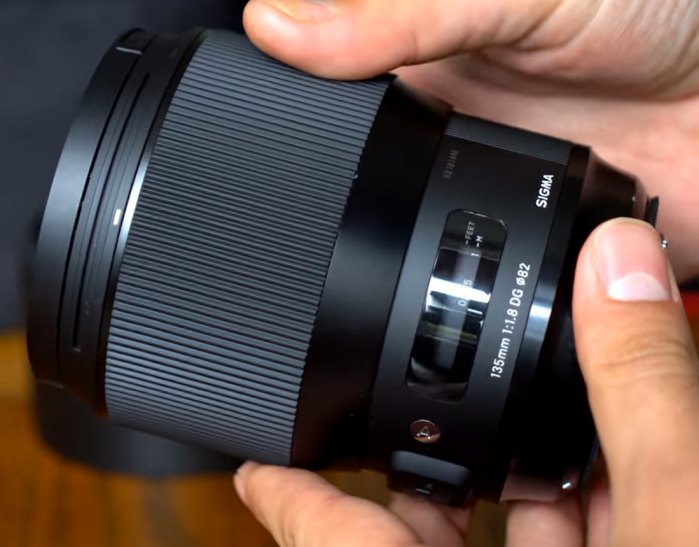
Thinking about something else, the lens has out-of-the-box features, the special electromagnetic aperture that grants a balance of exposure in the image. Sigma’s Global Vision series launch has benefited from the lens’s increased efficiency.
That’s much the lens has got to offer; if you are a travel filmmaker, you might need to hear this point. This lens is highly compact and configured with creative holds.
The lightest weight of 1130 grams keeps the thing favorable in terms of portability and storage. You don’t have to stick with the heavy expense, too; the lens is pretty affordable.
3. Sigma 85mm F/1.4 DG HSM Art
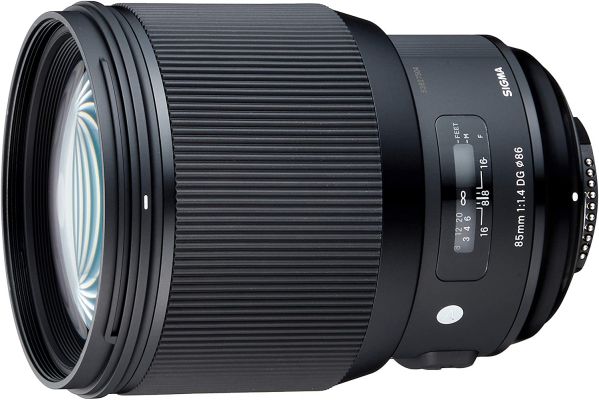
Checkout on
Amazon | B&H Photo Video | Adorama | Sigma
Moving on to the next, I have got another magnificent Sigma’s edition; Sigma 85mm f/1.4 lens. I keep this finest lens with me everywhere I go because of its infinite abilities.
This high-performer lens has been configured with some exquisite potential, designed to achieve truly optical performance.
I am very much interested in the lens focusing unit; it is designed with the super potent Hyper sonic motor like other Sigma lenses, but the focusing figure of the lens is so much better than others.
The lens is destined to provide a 33.46-inch minimal distance to focus, and the qualified magnification makes things even better for my close-up shots.
The following thing I love is how smoothly the lens enhances the image quality. Surrounded by a plethora of intelligence, the lens mastered optics because of its special element involvement.
There is some super multi-layering indulged that is applied to the lens in order to eliminate the lens flare and ghosting stuff. As I said, I am a dark-hour filmmaker, so the brightest f/1.4 ensures the highest amount of lighting on the subject as well.
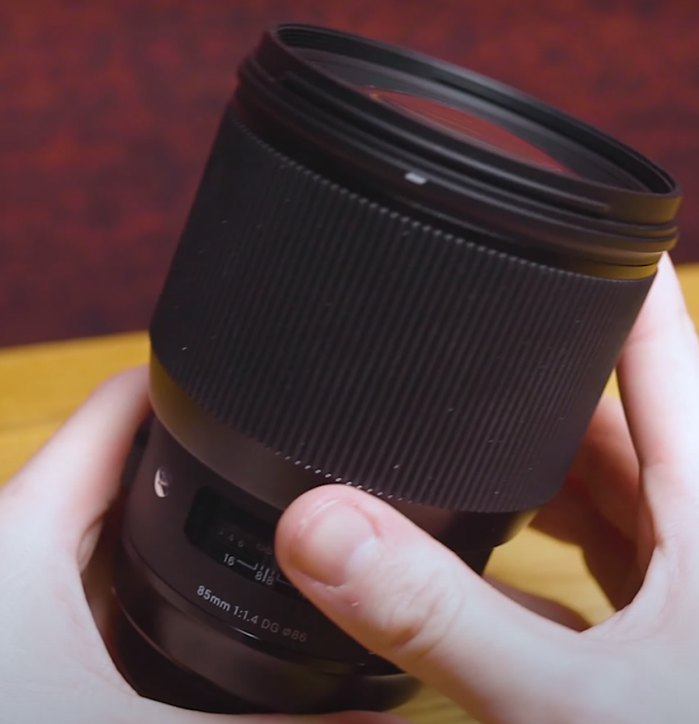
So, there goes that; Another secret of my stunning illuminated images is the special electromagnetic aperture, the technique that provides a better balance of exposure stability throughout the image.
I couldn’t be more pleased with the outer lens structuring, the lens.
The fine work of thermally stable composite material makes sure to add extra years to the lens life. You can also take this lens out there to shoot thunder as it is protected due to its weather-sealed layering.
And since the weight is not much of a deal, you can count on easy portability and storage with the lightest 1130 grams only. I prefer this lens best for shooting travel videos.
4. Sigma 60-600mm F4.5-6.3 DG OS HSM Fixed Zoom
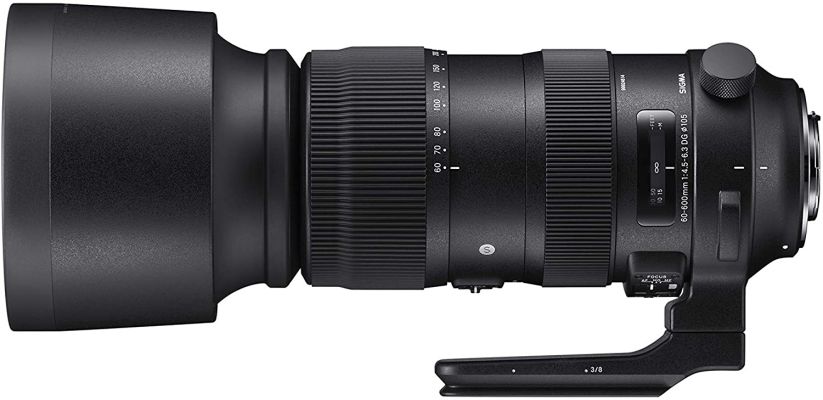
Checkout on
Amazon | B&H Photo Video | Adorama | Sigma
“Telephoto lens,” a word that itself is a definition of versatility, has got too much fandom out, including me. These lenses have been marked to be subjected to tons of intellectual abilities.
If you want that, you should definitely go for the Sigma 60-600mm lens; it has everything one should need to shoot stunning portraits.
There is so much about this lens, too many features to amuse you; let’s start with the imaging quality. I have been using this lens for over a month now, and the distance it can cover while catching a glimpse of the subject is amazing.
The focal length provided by the brand is 60mm to 600mm range, which is ideally super telephoto to get an adequate shot. Other than that, the optical elements and special 1 SLD and 3 FLD elements have definitely worked hardest in granting clarity to my imagery.
I can adjust the lens aperture according to the need within the range of F/4.5 to F/6.3, which is distinctive to be seen in lenses. There is no trouble with the focusing stuff as well; one can easily enjoy auto and manual focusing with a special focus distance limiter.
This limiter constrains the focus limit until I get the correct figure, the focusing distance can be practiced within 23.62 inches at the minimum, and a magnification of 0.3x gets me those stunning close-ups as well.
Other than that, the lens got many extraordinary things as well, like the weather body for my harsh climate shooting, a special zoom look that prevents accidental movement in zooming figures, and Ring-type ultrasonic motor engagement.
I do not have to worry anymore about security because of the lens’s additional lens hood involvement.
But the very crucial thing I needed to tell you is the rarest optical image stabilization. I always prefer my footage to be extra professional, and this very feature allows me that with the 4 shutters stop mechanism.
If you want more, the lens also allows the attachment of an additional tripod that can make things pro-leveled as well.
5. Sigma 70-200mm F/2.8 DG OS HSM
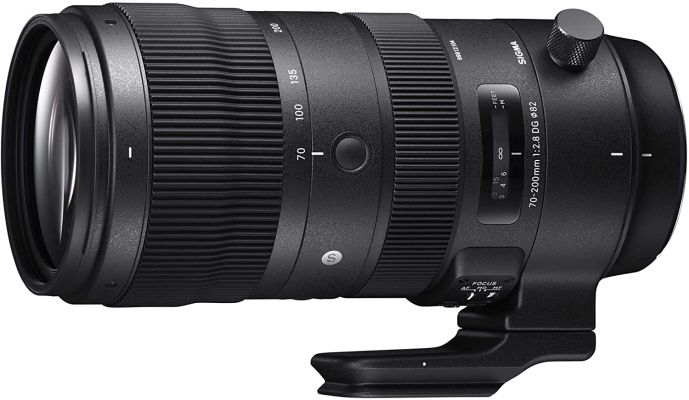
Checkout on
Amazon | B&H Photo Video | Adorama | Nikon USA
Have you ever wondered what it feels like to have the best lens in the world? I do because I have the most ravishing Sigma 70-200mm, a telephoto lens that has added charm to my photography skill since the day I bought it.
Want to know more about this lens? Let’s start with its engineering and appearance.
For a telephoto lens, this Sigma 70-200mm lens is a little more attractive; the most substantial TSC composition and brass bayonet mount have been keeping my lens protected.
The infrastructure has an-indifferent additional tripod collar that supports the rotating design tripod for the whole mount and stuff, which is quite impressive.
I found the focal length of 70mm to 200mm is pretty helpful for my daily wildlife stuff shooting, and the main aperture opening of f/2.8 grants enough illumination on the subject, which makes my footage clear and sharp.
I always use the intelligent optical stabilizer because I love how it minimizes the camera shake appearance in images and provides stability.
Rest is fine and almost as same as the other Sigma’s creation apart from the involvement of 11 rounded diaphragm blades; because of this, my image’s out-of-focus area doesn’t leave unattractive and exposes a blurry beauty.
I have been using this lens for a while and didn’t notice any flaw in its image quality. The optic is extraordinary. I can shoot for hours under any lighting because the distortion and aberration are taken care of by the special elementary collection and other special coatings.
Talking about the internal configuration, the lens is designed with an integrated Hyper sonic motor, one that can leave all my worries about focusing behind. I can implement quick and quiet autofocusing and full-time manual override anytime when I want.
I got pretty straightforward control with the most effortless focus ring, complemented with the focusing distance of 3.94 inches at minimal and the magnification of 0.21x as well. So yeah, I have this lens in my top recommendation because of its intellectual abilities and comfortability.
6. Nikon AF-P NIKKOR 70-300mm F/4.5-5.6E ED VR Specs
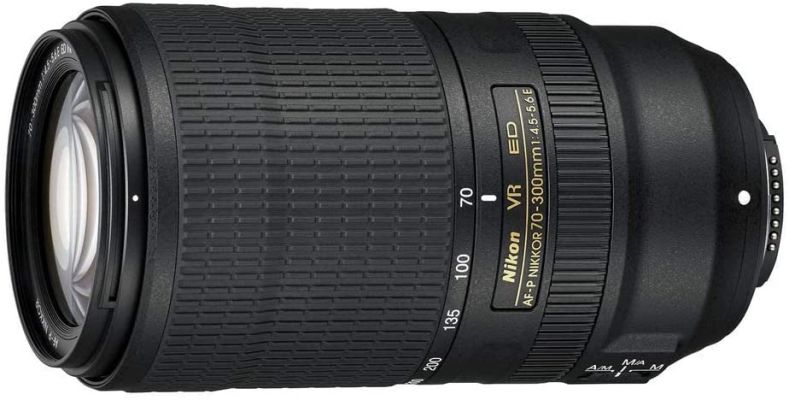
Checkout on
Amazon | B&H Photo Video | Adorama | Nikon USA
I have spent nights dreaming of the best telephoto lens until I found the ultimate tool for the same; the high-performer Nikon Nikkor 70-300mm lens.
I came across this beautiful Nikon lens a while ago; the fully featured design has added more skill factor to my photography.
Terming the performance and optics, I found this lens quite fascinating. It has the power to be paired with my other accessories.
The most extended reach of the lens allows my camera’s vision to catch the subject’s sharp glimpse with the 70mm to 300mm focal length range that benefits in shooting wildlife and nature stuff.
I recommend this lens for the environmental shot because the physics is way too strong to break, and the outer body is layered with weather protection that keeps the tools safe.
The image quality of the lens is impressively sharp and illuminating, which is all doing to its versatile aperture. With this lens, I am able to use the aperture as much as I want within the dark surroundings, and I can pick F/4.5 for most excellent, while an optimistic scenario can use F/5.6, throwing an adequate amount of light.
The left distortion, color fringing, and other common disruption are also not a big deal with this lens as special elements handle it pretty well.
The only thing I look at first in the lens is stabilization, and with this lens’s Vibration reduction image stabilization technique, I am almost at the top of the world.
With the 4.5 shutter stop mechanism, the lens eliminates every chance of distortion in the picture. Other things are taken care of by the high-performer AF-P motor. The motor provides an utterly smooth, quiet, and fast autofocus suited best for photos and video.
The focusing can be used with a limit of 3.94 inches at a minimal distance and magnification of 0.25x. This gives the best when shooting dynamic subjects, and since the weight of the lens is also not much high, 680 grams only, I didn’t have any inconvenience in storing or taking it to another place.
7. Sigma 100-400mm f/5-6.3 DG OS HSM
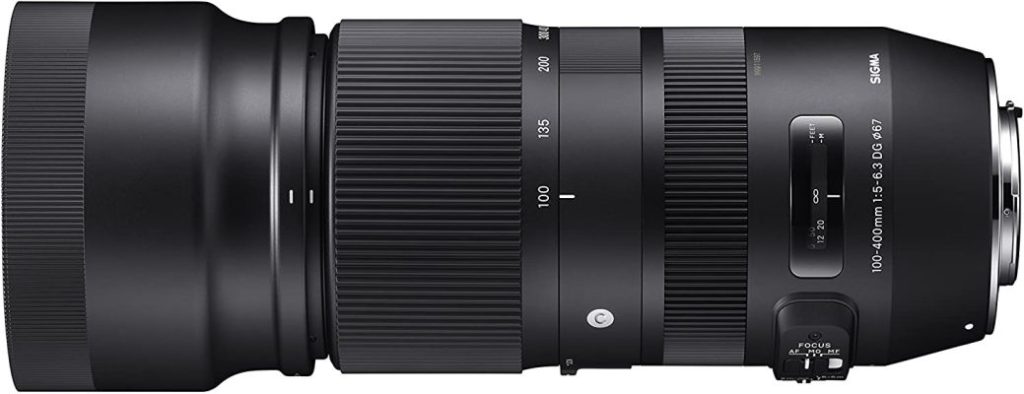
Checkout on
Amazon | B&H Photo Video | Adorama | Sigma
Sigma’s contemporary line “The vision series is highly popular,” and personally, it’s my favorite. Every single lens of the series features some amusing abilities. Sigma 100-400mm lens is one of the best when it comes to telephoto lenses.
The lens is ideally balanced between convenience and creativity. I opt for this model for its versatile handling and lightweight build.
As per my insight, the lens composition is done with thermally stable material, and the front element of the lens is secured with water and oil repellent suited for a lazy photographer like me.
Attaching other accessories with the lens is also easiest because the brass bayonet mount has the most robust mount accuracy. Like other lenses, this one is too rich in portability due to the compact design and 1160 grams weight.
The supremacy of this lens increases when I can take out the lens to shoot nature, wildlife, and a crowd. I sometimes also catch some beautiful twilight shots because the versatile F/5 can expose the proper amount of light in the shot.
The versatility of the lens allows the aperture to be adjusted from F/5 to F/6.3 due to the dark or bright surroundings, which I found pretty intriguing. Backing up with other image correctness elements, the lens has a wonderful image quality mechanism.
Counting on its magnetic properties, how can I forget about the optical image stabilizer, one that minimizes the camera shake effect and benefits balanced images. Also different from others this special electromagnetic aperture manages the exposure control stability to brighten the picture equally.
Similarly, Sigma’s other lens I have used, this one also configured with the Hyper Sonic motor in search of quick and quiet auto and full-time intuitive manual focusing.
But unlike the others, the lens has the conventional twist mechanism that adjusts the zoom position when shooting fast-moving objects. The focusing works within a certain range, recalling 5.25 inches at a minimum and 0.26x magnification at a maximum.
Best Z-Mount Telephoto Lenses for Nikon
8. NIKON NIKKOR Z 24-200mm f/4-6.3
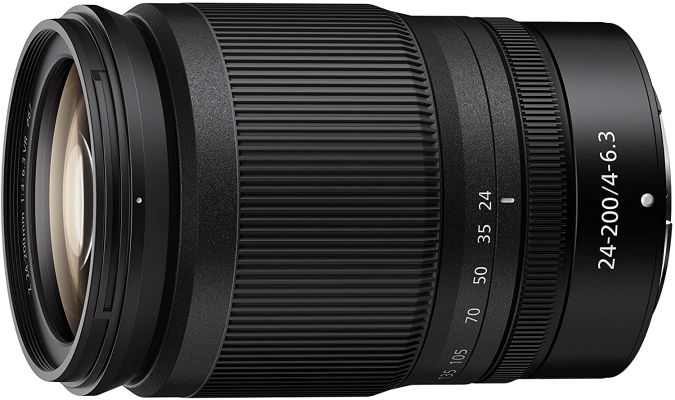
Checkout on
Amazon | B&H Photo Video | Adorama | Nikon USA
This special section of the article is all about Z-mount cameras, the cameras that are considered highly versatile and creative. I personally am fond of using Z-mount cameras, so I know pretty much all about their lenses.
This Nikon Nikkor Z 24-200mm lens is my first choice for the Z mount camera, relatively because of its infinite properties.
The lens is an all-in-one exception for my ordinary photography, with better optics and performance all at once. What I like the most is how attractively it provides a wide angle to the telephoto longest range; 24mm to shoot the landscape with precise details and 200mm for my portrait shots.
Focusing is much more effortless because the 1.6-inch distance at the minimum and the 0.28x magnification at the maximum give full control to catch the best of the subject.
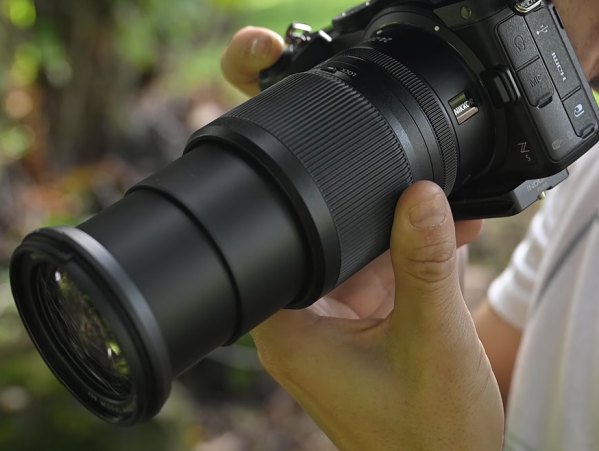
Out of the ordinary, the lens has a special electromagnetic aperture; this manages the exposure stability throughout the imagery with the faster speed of shooting.
The engineering of the lens is pretty straightforward; all the basic controls are designed at the lens barrel to promote convenience. Also, a special control ring is fixed at the top that can be manually adjusted to control exposure and aperture.
Taking the best shot has been easiest with the compact and strongest-bodied lens. Weather-sealed layering gives me freedom of shooting under inclement climate conditions, and the lightest 530 grams weight keeps the ease throughout the shot.
It’s the best budget-friendly lens with supreme abilities and an exciting Vibration reduction stabilization technique that manages the balance in footage through the 5 stops tactic.
So, this is one of the best versatile zoom lenses with the ability to shoot in low light conditions. Yes, I found the versatile aperture F/4 to F/6.3 quite a wonder because it gives ease of adjusting the lighting amount as the requirement.
The lens and other optical elements handle the disruption deal to give the best footage.
9. Nikon NIKKOR Z 70-200mm f/2.8 VR S
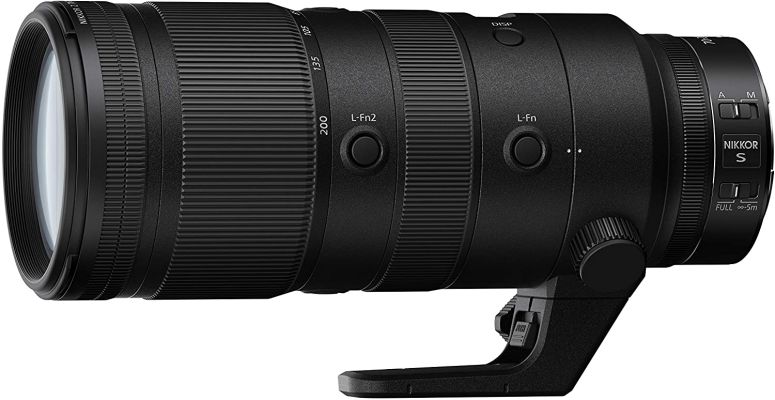
Checkout on
Amazon | B&H Photo Video | Adorama | Nikon USA
I have been into photography stuff for decades and shooting sports, travel, and nature has always fascinated me a lot. The lens with incredibly increased control and better optics Nikon Nikkor Z 70-200mm lens has always been my favorite.
This lens has been complemented with enhanced features to print impeccable-quality images.
First, the lens operates with the built-in multi-focus system that incorporates the fastest and most accurate focusing, equivalently both smooth autofocus and full-intuitive manual focus override.
I am habitual of using focusing in both video and photo applications, so I know the focusing is very much intriguing. The focusing is limited with the 1.64-inch minimal distance and 0.2x maximum magnification.
Besides that, I love the innovation of the lens and the involvement of an OLED panel; It quickly gives me the peak of focus distance, depth of field, aperture, and other basic stuff.
Continuing the same, the lens features a control ring and two functional buttons, and I am amused with them. I can easily customize the ring and buttons with the essential function so that I don’t have to engage with the camera every time I want to change something.
Stating technical factors, the lens has the most extended reach of 70mm to 200mm and a maximum aperture of F/2.8, providing better illumination in the footage.
This is the primary reason why my photos are always balanced with quality. Like any other Nikon camera, the electromagnetic aperture assists in the sharp illuminated optics. But that’s not the best part.
I have this habit of using additional accessories for better improvement in the footage; tripods are one of my favorites. This lens allows the attachment of a removable, rotating tripod collar, and it allows it to maintain stability during vertical and horizontal orientations.
This lens is a tough bodied with the strongest composition, one with the frontal weather protection layering and the lightest 1360-gram weight that makes things super easy in traveling and filmmaking.
10. NIKON NIKKOR Z 85mm f/1.8 S
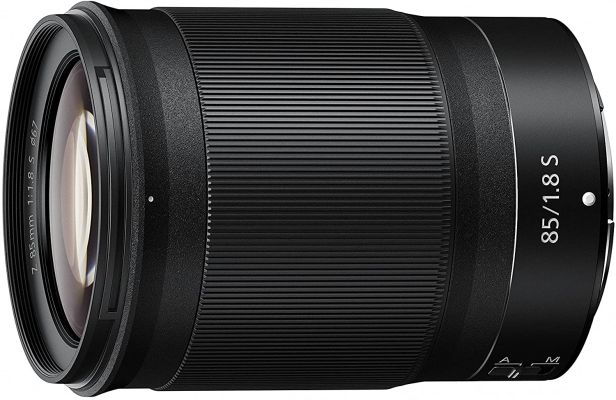
Checkout on
Amazon | B&H Photo Video | Adorama | Nikon USA
I am kind of at the highest stage of excitement when mentioning this magnificent Nikon Nikkor Z 85mm lens. I just got to use this master tool, and trust me, it’s quite an alternative to those high-budget lenses.
I have been using this lens to click nature, sports, action, and travel shots, and I don’t know; maybe its prime character has been providing uninterrupted speed and precision.
The lens has some great features, like the engagement of a multi-focus system. I always had this vision of having both speed and quality in focus, and this lens gave me that.
The multi-focus system uses the expertise of both Stepping motors and AF drive units that deliver the fastest and most accurate focusing. I have implemented this supreme focusing with every picture shot that, of course, is bound with a certain limit, the distance at a minimum of 2.62 inches and 0.12x magnification at maximum.
Telephoto lenses are popular for their heroic quality image, and so does this special one. I have shot some ravishingly beautiful shots with this lens, all with the brightest illumination and sharpness.
The aperture of f/1.8 is fixed to grant immense brightness in my dark-hour footage. Like my other Nikon lens experience, this one, too, had a special electromagnetic aperture that managed the exposure stability in my photos. And the other optical elements are also fine.
I have a pretty wonderful experience of shooting portraits with this lens through its 85mm longest reach and better adjustment. You don’t have to worry about the lens weight anymore because the lightest 470 grams weight has felt like almost nothing in my hand.
I do have to believe in the lens’s most vital configuration, and this lens has provided up to my expectations.
11. NIKKOR Z 100-400mm f/4.5-5.6 VR S
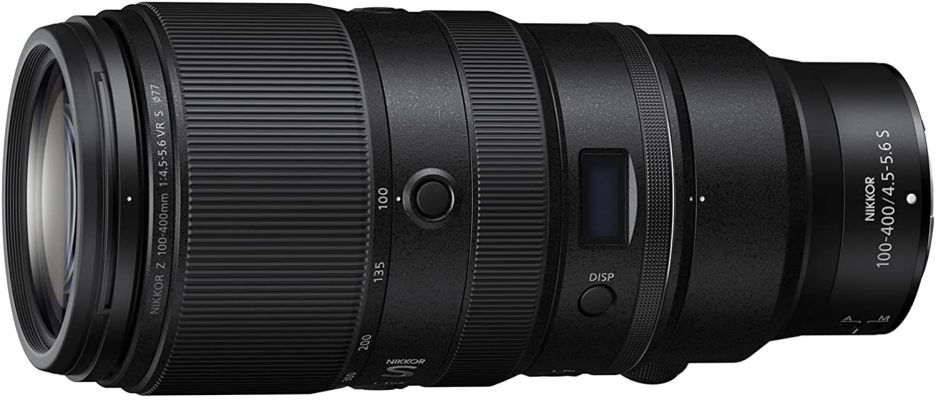
Checkout on
Amazon | B&H Photo Video | Adorama | Nikon USA
Don’t miss the opportunity of shooting flawlessly perfect images with a highly versatile lens like, because I didn’t. I have opted for this wonderful Nikon Z 100-400mm lens; the lens with supreme potential and creativity, and that comes under my pocket-friendly figure.
I have been into photography for a long time, and I have explored the best adventures with this multi-functional lens.
I am addicted to the lens’s integrated OLED panel that grants a quick peak of the basic settings, one that can be easily adjustable through assignable functions buttons or the control ring.
The telephoto reach of the lens from 100mm to 400mm bestows versatility, while the manageable F/4.5 to f/5.6 aperture takes care of picture quality.
The lens has some exciting features and advancements; I very much prefer its intuitive Vibration reduction technique. The 5.5 shutter stop mechanism has cut down all of the disturbing shaky appearances from the footage and gave out a balanced shot, no matter whether I am using focusing video filming, or fastest speed shooting.
The focusing gets, even more, better with the perimeters of the 2.5 inches minimum focusing distance and 0.38x maximum magnification.
I have never doubted the focusing accuracy because the abilities of the multi-focus system are just impeccable. Two separate AF drives mean the speed and accuracy together.
The lens handling has also impressed me in a certain portability aspect. The dust and moisture-resistant body of the lens has centered solidity, which means you can count on lens durability.
The lightest weight of the lens, 1455 grams, eases the whole mobility factor, while the design of the barrel conveys convenience the same. I have got to use my favorite tripod with the lens to explore more stability.
Other than that, I cannot forget to mention the additional inner balance technology, one that offers consistent balance to keep the lens stable at a position, avoiding taking shaky shots.
Know a little about telephoto lenses
The telephoto lens is a famous and most influential name in the world of cinematography; they are called a specific type of long-focus lens that acts to achieve the longest-range photography.
In simple words, these lenses are the ones that have increased focal length and are commonly used to capture faraway objects with the sharpest details and clarity possible.
These lenses incorporate an enormous focal length, and their physical length is shorter than the focal length, and all act to create a long-focus range to expose better lighting to go through the sensor.
The telephoto lenses are characterized by three different forms short telephoto lens( 85mm focal length), a Medium telephoto lens (200mm to 300mm focal length), and a super-telephoto lens (500mm to 600mm focal length).
The functioning of the telephoto lenses is much larger apart from just capturing the farthest away subject. A few of the major advantages of telephoto lenses are
- These lenses are best for shooting subjects that are kept at the farthest distance.
- They are known for their immense creativity.
- These lenses are categorized for providing a beautiful compression effect
- These are potent enough to provide a blurry background effect in portrait
- These lenses are best for bringing action shots to life in the most creative way possible
- They come with immense intelligence and better innovative additions
- These lenses are popular for better optics and highest resolution pictures.
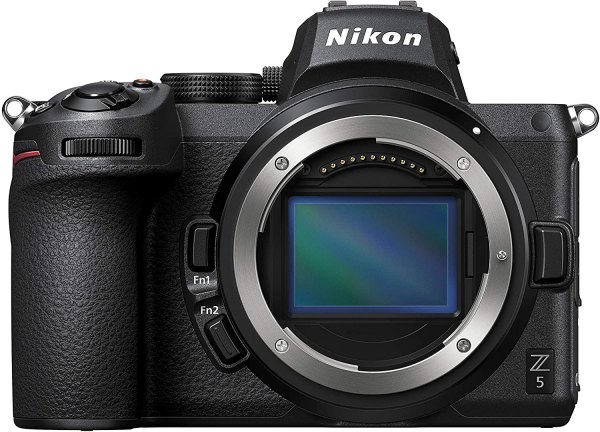
What did I consider while buying the telephoto lens?
Photography is nothing less than my life; I have poured so much into the way of learning and exercising different forms of photography. This relatively gave me a little insight into the right camera, the right lens, and other tools.
So, I have paid extra attention while making up my mind about purchasing. Now lenses are not something you wrote down in your grocery list. So, they need to be sturdy and examined carefully before purchase.
Thus, here are some straightforwardly accessible points that I have determined and kept in mind while buying a telephoto reach lens.
Compatibility– Before initiating the whole step, start with the very first step by checking the compatibility. Look for the camera you own and for which you are considering the telephoto lens, make sure the camera is familiar with telephoto photography, and look for the lens mount it uses for the valid purchase. Cross-check the camera size and weight for a better idea of the lens itself. For instance, I have the Nikon Z-mount series, so I have opted for the Z-mount lens.
Focal length– Telephoto lenses are known best for their most extended focal length; their expertise is all about getting a better vision of the farthest-standing subject without getting any closer to the same. So the thing you need to determine is the range you require. Telephoto lenses are of three different types; short telephoto, medium, and super-telephoto lenses that respectively range from approximately 85mm, 200mm, and 500mm lens. I have chosen moderate telephoto lenses according to my requirement.
Aperture– The telephoto lens’s longest reach over the subject consists of precise details, which take us to the aperture. Now, I am pretty picky about the aperture because the whole image quality depends on the amount of lighting that falls on the sensor. Usually, telephoto lenses come with a versatile aperture, which means they can be adjusted accordingly to the requirement of light. However, if you ask me, I found f/2.8 to f/5 aperture best for telephoto photography.
Engineering– Because of being loaded with immense creativity and intelligence, telephoto lenses usually come in a larger size and heavy body. This can be problematic with some of my lightest-weight cameras as the chances of fluctuation increase. So I have made up my mind to choose a lens with a small size and the lightest weight. I have also considered ergonomics as the major portability factor.
Durability– It’s crucially important to look for lens durability, which can determine the lens life longevity. This can be analyzed with some essential factors, like the lens composite material one that defines the lens strength. Telephoto lenses are built to shoot wildlife and nature photography which means they need to be built weather resistant to work in harsh climates. Do not forget to check this in the lens.
Stabilization– The stabilization is most significantly essential for the telephoto lens because they are built for the longest hour of filming, so I have determined the lens stabilization at first. Some telephoto lenses have included optical or vibration reduction stabilization; this is utterly necessary for a balanced lens shot. Do not forget to check this before buying.
Optical design– As I mentioned, telephoto lenses are best to shoot creativity, so it is crucially important to check the optical design elements; these elements are tied up in groups, and they signify the lens’s better quality. I have also peek for some additional advanced layering like the nanocrystal or super integrated coating that deals with the distortion or ghosting caught by your telephoto lenses during the shot.
Cost– Cost is the dominant factor of worthy packaging; this fact plays a major in determining whether you have a rightful lens or not. Before investing, make sure to take a mental note of your ideal budget and do not fall prey to heavy, expensive lenses, and always buy the thing you need most. This signifies that you are not investing in something you don’t need.
Brand – lastly, you need to configure the brand of the lens; the lens brand states the authenticity of the lens; also, it declares the strongest compatibility with the lens itself, so it’s quite necessary to look for the brand. For instance, I have opted for Nikon lenses for the Nikon camera; this grants reliability and peace of mind; Except for those Third-party lenses like Sigma, Tamron can also do much better.
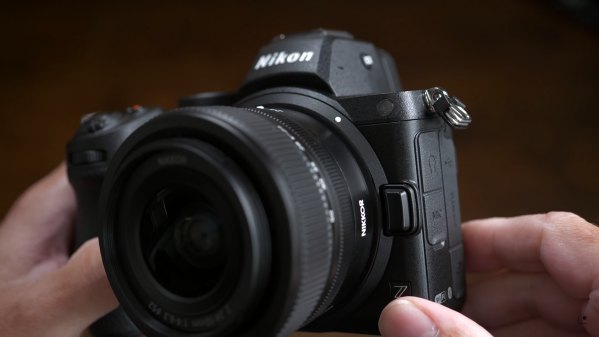
Frequently Asked Questions (FAQs)
Q. What is the difference between a Z mount and an F mount?
Nikon has introduced the Nikon F mount and Z mount cameras in their advanced appliances collection. Z-mount cameras use Z-mount lenses while F-mount cameras crave for F-lenses to work effectively. In exception, they can be used interchangeably with their respective advanced adapter.
Nikon Z-mount – Nikon Z-mount has some mouthful benefits, including the larger diameter; They are smaller and more compact in size with the possible modernity. The Z mount lenses perform best with in-body stabilization, and they are considered more flexible.
Nikon F-mount – Even after being a formal launch, the F-mount lenses are an excellent launch. They are considered more luminous and more decadent in features. They have better luminosity and are more colorful, alive, and subtle. They are rich in accuracy and reliability.
Q. How to get the best shot with a Telephoto lens?
Telephoto lenses are always known for their immense creativity and stuff. These lenses are designed with enormous innovation, which is why they are considered the most artistic shot. However, there are a few secret hacks that can give some exquisite shots. Always use a tripod or camera stabilizer while shooting with a telephoto lens. You can use a shutter release to fire away from a distance. Do imply near and far technique while shooting. Isolate your subject before shooting well, and be creative with the shallow depth of field. This all basic can enhance the impression and capability of the telephoto lens in the most creative way possible.
Wrapping up
At last, I have confronted the fact that the whole market is flooded with tons of effective lenses, one different from the other and productive in its own way.
Even with the experiment with numerous variations, I still found myself craving something every time I held the camera. This curiosity has compelled me to write this whole article, all about the lenses I used earlier.
I have had a good time with all these lenses in my wildlife, nature, event, and other creative photography because telephoto lenses have always been my favorite.
This is the primary reason I have listed only the best in the series to help a friend out. Hope you liked the article and found your ultimate match of the telephoto lens for the Nikon camera.
So that is all; I bid adieu to all my photographer friends out there and wish you the best to embrace immense creativity in every shot.

